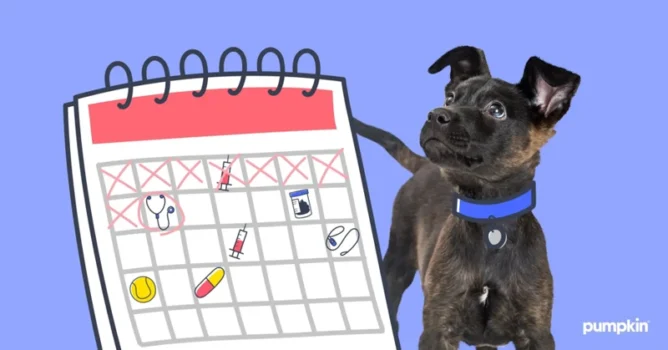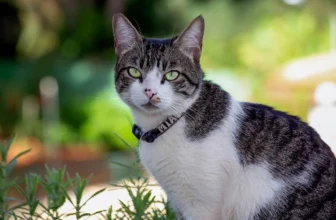Welcoming a new Wirehaired dog into your home can be an exciting and fulfilling experience. However, it is important to take care of your furry friend’s health. One of the first things you should do as a responsible pet owner is schedule your Wirehair’s first vet visit. The thought of the first vet visit can be intimidating, but don’t worry! Preparing yourself and your dog can help ease any anxieties you may have. In this article, we will guide you through what to expect and how to prepare for your Wirehair’s first vet visit step-by-step.
Preparing for the Visit

Preparing your Wirehair for their first vet visit can be an overwhelming experience, especially if it’s your first time having a cat. However, it’s essential to make sure your Wirehair receives proper healthcare early on in their life to ensure a long and healthy life. In this section, we’ll cover everything you need to know to prepare for your Wirehair’s first vet visit, including making the appointment and what to bring. If you are a new Wirehair owner, make sure to check our article on newborn Wirehair care tips and feeding Wirehair kittens to keep them healthy from the start.
Making the Appointment
Making an appointment for your wirehair’s first vet visit is an important step in ensuring their health and well-being. Here are some tips to help make the process easier:
– Research potential veterinary clinics in your area that specialize in caring for wirehair cats. You can ask for recommendations from friends, family members or fellow cat owners. In case you didn’t find this type of information, try to visit /wirehair-litter-health/ or /newborn-wirehairs-health/ to be informed about healthy conditions of Wirehair cats.
– Once you find a clinic that you like, give them a call, or check if there is an option to make an appointment online. Explain that this is your wirehair’s first visit and ask what their procedures are. It’s essential to ask if they are familiar with wirehair cats, as they have certain distinct traits. Prepare your list of questions for the staff to make sure you don’t miss anything important.
– Plan on making the appointment at least one week in advance. This will give you enough time to prepare everything you need for the visit. If possible, choose a time of day when your wirehair cat is most alert and active.
– Don’t forget to mention any specific concerns or issues you have noticed, such as your wirehair’s unusual behavior, sneezing, or vomiting. This can help the veterinarian to prepare for the visit and address the problems more effectively.
– Finally, make sure you write down the date, time, and location of the appointment. Doing this will help you to remember the details and prevent any confusion. If you are still preparing your home for a new Wirehair you can visit /prepare-home-wirehair-kittens/.
What to Bring
When preparing for your wirehaired puppy’s first visit to the vet, it’s important to bring a few items to ensure a smooth and successful appointment. Here is a list of essential items to bring with you:
| Item | Importance |
|---|---|
| Vaccination Records | It’s important to bring any previous vaccination records to ensure the vet has a complete medical history of your puppy. |
| Fecal Sample | A fecal sample is necessary for the vet to check for any parasites or worms that may be present in your puppy’s digestive tract. The sample should be no more than 12 hours old. |
| List of Questions | Preparing a list of questions to ask the vet is essential to ensure you don’t forget anything important and can get the most out of the visit. |
| Leash and Collar | You’ll need a leash and collar to safely transport your puppy to and from the vet’s office. |
| Treats and Toys | Bringing along your puppy’s favorite treats and toys can help keep them calm and happy during the visit. |
By being prepared and bringing these essential items, you can help ensure that your wirehaired puppy’s first vet visit is a positive and successful experience. In the next section, we’ll cover what you can expect during check-in and the examination.
Check-In and Exam

As a pet parent, a visit to the vet with your Wirehair is an important step in ensuring their health and happiness. During the check-in and exam process, your veterinarian will examine and assess the health of your furry friend. This can sometimes be overwhelming for both you and your pet. However, being aware of what to expect during the check-in and exam process can help ease any perplexity. So, let’s dive into the process and make sure you are prepared for your Wirehair’s first vet visit.
Checking In
When you arrive at the veterinary clinic, you’ll need to check in with the receptionist. Make sure you arrive on time, as being late can throw off the entire schedule for the day. The receptionist will likely ask for your pet’s name and the reason for your visit. During this time, let the receptionist know if you have any concerns or questions you’d like to speak with the veterinarian about, as they can make note of it for your appointment.
Once you have checked in, you may need to wait in the waiting room for a short period of time. This is common as the veterinarian may have other patients to attend to before your pet is seen. During your wait, consider filling out any forms or questionnaires that may have been given to you by the clinic; these can provide valuable information that the veterinarian can use to gain a better understanding of your wirehair’s medical history.
Tip: While you wait, take some time to acclimate your kitten to the area. This can help reduce any stress or anxiety they may have during their exam. If you haven’t already, consider reading up on wirehair kitten socialization techniques.
Once it’s time for your wirehair to be seen, the veterinarian or veterinary technician will escort you and your pet to the exam room. Make sure you have any questions or concerns prepared for your wirehair’s first vet visit. Be sure to discuss any changes in your pet’s behavior, activity level, appetite, or other concerning symptoms you may have noticed. It’s important to be as detailed as possible so the veterinarian can make an accurate diagnosis and provide appropriate treatment if necessary.
Tip: If your wirehair is due for vaccinations or deworming, make sure to read up on kitten vaccination schedules to be prepared for the veterinarian’s recommendations.
During the entire process of checking-in, waiting, and being seen by the veterinarian, remember to remain calm and reassuring to your wirehair. This can help make the experience less stressful for both you and your pet and set a positive tone for future vet visits.
The Exam
During the exam, your wirehair will receive a full physical to ensure they are in good health. The veterinarian will check your pet from nose to tail. This will include:
- Checking your wirehair’s ears: The vet will examine your wirehair’s ears for debris, mites, and signs of infection.
- Checking your wirehair’s eyes: Your vet will check your wirehair’s eyes for redness, swelling, cloudiness or other abnormalities. Some wirehair breeds may have specific eye conditions your vet will want to look for.
- Checking your wirehair’s mouth and teeth: Your vet will look at the gums, teeth and tongue to spot potential signs of dental problems, inflammation or infection. Your vet can provide guidance on how to keep your wirehair’s teeth and gums healthy.
- Checking your wirehair’s skin and coat: Your vet will check your wirehair’s skin for any bumps, lumps or bald patches, and will also check hair and skin condition to assess overall health.
- Palpating your wirehair’s lymph nodes and abdomen: The vet will feel your wirehair’s lymph nodes for any signs of swelling, which could indicate infection or other health problems. They’ll also check your wirehair’s abdomen for any abnormalities in the organs or other issues.
- Assessing your wirehair’s weight and vital signs: Your vet will weigh your wirehair and assess other vital signs like temperature, breathing rate and heart rate. This will help the vet get a snapshot of your wirehair’s overall health.
If your wirehair is a kitten, your vet may also inspect their teeth to determine and predict their adult teeth. If you are interested in more information about kitten stages, you can read about it on our website Understanding Wirehair Kitten Stages.
The exam is routine, but it’s important so that your vet can detect any early signs of health issues and work with you to address them quickly.
Questions to Ask
During your wirehair’s first vet visit, it’s important to ask any questions you may have about their health and well-being. Here are some questions to consider:
| Question | Why to Ask |
| What is my wirehair’s ideal weight and how can I maintain it? | Weight management is important for your wirehair’s overall health and can help prevent future medical issues. |
| How often should my wirehair be examined and do they need any specific tests? | Regular check-ups and tests are important for early detection and prevention of any potential health issues. |
| What kind of diet is best for my wirehair and are there any foods to avoid? | Diet plays a crucial role in your wirehair’s health and can help prevent certain conditions such as obesity or diabetes. |
| Are there any specific activities or exercises I should do with my wirehair? | Exercise is important for maintaining your wirehair’s physical and mental health, but certain activities can be harmful. |
| What kind of grooming routine does my wirehair need? | Proper grooming can help prevent skin issues and keep your wirehair looking and feeling their best. |
| What should I do in case of an emergency? | Being prepared for emergencies can save your wirehair’s life and give you peace of mind. |
By asking these questions and any others that come to mind, you can ensure that your wirehair receives the best possible care. Remember, no question is too silly or insignificant when it comes to your pet’s health and well-being.
Vaccinations and Preventative Care
Ensuring your wirehair receives proper vaccinations and preventative care is crucial for their long-term health and wellbeing. As a responsible pet owner, it’s important to understand the importance of these measures and how they can protect your furry friend from various illnesses and diseases. In this section, we’ll discuss the different vaccinations and preventative care options available for your wirehair as well as potential schedule recommendations. Read on to learn more about how to keep your wirehair healthy and happy for many years to come.
Vaccinations
Protecting your Wirehair from diseases is a vital part of keeping them healthy, and vaccinations are an essential tool in achieving this. During your pup’s first vet visit, you’ll discuss the vaccinations they need based on their age, lifestyle, and health. Below are some of the core vaccines and what they can protect against:
- Distemper: a highly contagious respiratory and neurological disease that can be fatal.
- Hepatitis: a virus that affects the liver and can result in severe illness or even death in puppies.
- Parvovirus: an incredibly contagious and often deadly virus that causes severe diarrhea, vomiting, and dehydration in infected dogs.
- Parainfluenza: a highly contagious respiratory infection that can contribute to kennel cough.
- Rabies: a fatal disease that is transmissible to humans. Rabies vaccinations are required by law in most areas.
It’s important to remember that some vaccines may require multiple doses or booster shots to ensure maximum effectiveness. Your veterinarian will guide you in developing a comprehensive vaccination plan for your Wirehair. Additionally, it’s worth discussing optional vaccinations such as Lyme disease or Leptospirosis with your veterinarian, especially if your Wirehair is at greater risk due to frequent exposure to other animals or outdoor activities.
Vaccinations are a critical aspect of preventive healthcare for your Wirehair. Work with your vet to develop a personalized vaccination plan that considers your dog’s specific health needs and risks.
Preventative Care
Preventative care is an essential aspect of your wirehair’s overall health and well-being. Your vet may recommend a few specific preventative care measures to ensure your pup stays healthy. Here are some examples of preventative care measures that may be recommended during your wirehair’s first vet visit:
- Parasite Control: Parasites such as fleas, ticks, and heartworms are not only annoying but can also cause serious health issues in your wirehair. Your vet may recommend preventative medications or treatments to keep your pup protected from these pesky critters.
- Dental Care: Good dental hygiene is important for all dogs, including wirehairs. Your vet may recommend regular teeth cleanings or suggest dental chews and toys to help keep your pup’s teeth clean and healthy.
- Diet and Exercise: A healthy diet and regular exercise are key components to maintaining your wirehair’s health. Your vet may suggest a specific diet or exercise routine that will benefit your pup’s individual needs and lifestyle.
- Microchipping: A microchip is a tiny device that is placed under the skin of your wirehair, usually in the neck area. This device contains important information about your pup and can be scanned by vets and animal shelters to help reunite you with your pet if they ever become lost.
- Blood Work: Your vet may recommend blood work for your wirehair during their first visit. Blood work can help detect any underlying health issues, such as liver or kidney problems, and allow your vet to develop a specific treatment plan tailored to your pup’s needs.
Remember, preventative care is important for maintaining your wirehair’s health and preventing future health issues. Follow your vet’s recommendations and keep up with regular check-ups to ensure your pup stays happy and healthy for years to come.
Closing Thoughts
As you wrap up your wirehair’s first vet visit, there are a few closing thoughts to keep in mind. Firstly, remember to schedule any follow-up appointments or treatments recommended by the vet. It’s important to stay on top of your pet’s health and preventative care.
Additionally, take note of any changes in behavior or health that you notice in your wirehair in the coming days and weeks. If you have any concerns, don’t hesitate to reach out to your vet for further advice.
Finally, celebrate the milestone of your wirehair’s first vet visit! It’s an important step in ensuring their long-term health and happiness. Treat them with an extra toy or a special treat to make the experience a positive one.
The most important thing to remember is that your vet is there to support you and your pet. Don’t hesitate to ask questions or voice any concerns you may have. With proper care and preventative measures, your wirehair will lead a happy, healthy life by your side.
Frequently Asked Questions
1. How soon should I take my wirehair to the vet for the first time?
You should take your wirehair to the vet within a week of bringing them home.
2. How can I prepare my wirehair for their first vet visit?
You can prepare your wirehair for their first vet visit by getting them used to being handled, practicing proper leash etiquette, and making sure they are clean and groomed.
3. What should I bring to my wirehair’s first vet visit?
You should bring a record of your wirehair’s medical history, any previous veterinary records, their current vaccination records, and a urine and stool sample if requested by the vet.
4. What should I expect during my wirehair’s first exam?
You should expect the vet to thoroughly examine your wirehair’s eyes, ears, nose, mouth, skin, coat, and paws. They may also take your wirehair’s temperature and check their weight.
5. What vaccinations should my wirehair receive?
Your wirehair should receive core vaccinations such as rabies, distemper, parvovirus, and adenovirus. Non-core vaccinations such as bordetella and Lyme disease may also be recommended depending on your wirehair’s lifestyle and location.
6. When should I schedule my wirehair’s next vet visit?
You should schedule your wirehair’s next vet visit based on the vet’s recommendations and your wirehair’s individual needs. Annual check-ups are usually recommended.
7. What preventative care measures should I take for my wirehair?
You should make sure your wirehair is up-to-date on their vaccinations, keep them on a regular flea and tick prevention regimen, and maintain a healthy diet and exercise routine.
8. What questions should I ask my vet during my wirehair’s first visit?
You should ask about the best ways to keep your wirehair healthy, any specific health concerns related to your wirehair’s breed, and what to do in case of an emergency.
9. Can I bring other pets or family members to my wirehair’s first vet visit?
You should check with your vet beforehand, but it is typically acceptable to bring other pets or family members to your wirehair’s first vet visit.
10. What are some signs that my wirehair may need to see the vet?
If your wirehair is vomiting, has diarrhea, is lethargic, has a loss of appetite, or is showing signs of pain or discomfort, they may need to see the vet. It is always better to err on the side of caution and seek veterinary care if you are concerned about your wirehair’s health.







